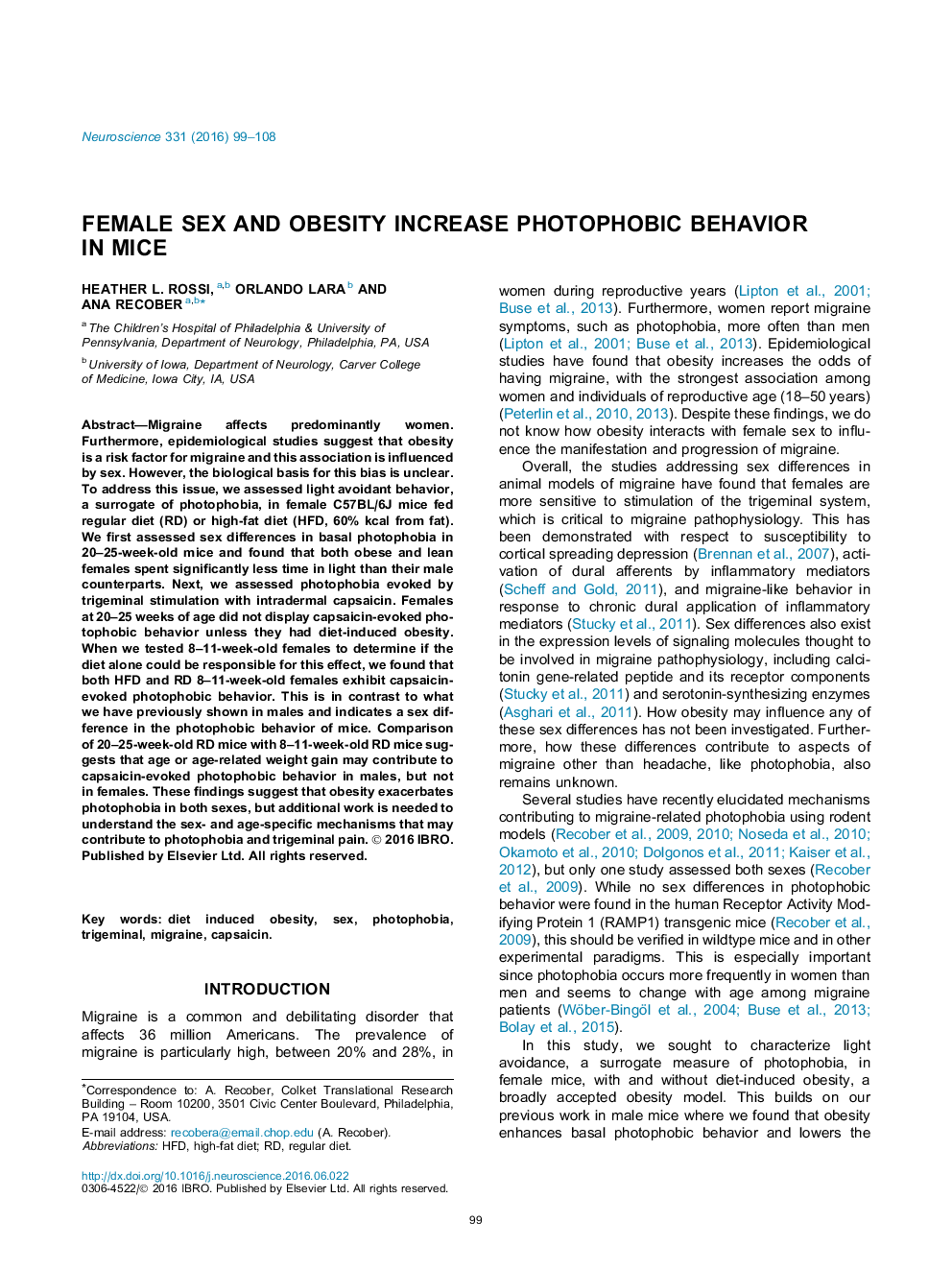| کد مقاله | کد نشریه | سال انتشار | مقاله انگلیسی | نسخه تمام متن |
|---|---|---|---|---|
| 4337293 | 1614745 | 2016 | 10 صفحه PDF | دانلود رایگان |
• Female mice are more photophobic than male mice.
• Young female but not male mice are susceptible to capsaicin-evoked photophobia.
• Obesity enhances capsaicin-evoked photophobia in female and male mice.
Migraine affects predominantly women. Furthermore, epidemiological studies suggest that obesity is a risk factor for migraine and this association is influenced by sex. However, the biological basis for this bias is unclear. To address this issue, we assessed light avoidant behavior, a surrogate of photophobia, in female C57BL/6J mice fed regular diet (RD) or high-fat diet (HFD, 60% kcal from fat). We first assessed sex differences in basal photophobia in 20–25-week-old mice and found that both obese and lean females spent significantly less time in light than their male counterparts. Next, we assessed photophobia evoked by trigeminal stimulation with intradermal capsaicin. Females at 20–25 weeks of age did not display capsaicin-evoked photophobic behavior unless they had diet-induced obesity. When we tested 8–11-week-old females to determine if the diet alone could be responsible for this effect, we found that both HFD and RD 8–11-week-old females exhibit capsaicin-evoked photophobic behavior. This is in contrast to what we have previously shown in males and indicates a sex difference in the photophobic behavior of mice. Comparison of 20–25-week-old RD mice with 8–11-week-old RD mice suggests that age or age-related weight gain may contribute to capsaicin-evoked photophobic behavior in males, but not in females. These findings suggest that obesity exacerbates photophobia in both sexes, but additional work is needed to understand the sex- and age-specific mechanisms that may contribute to photophobia and trigeminal pain.
Journal: Neuroscience - Volume 331, 7 September 2016, Pages 99–108
